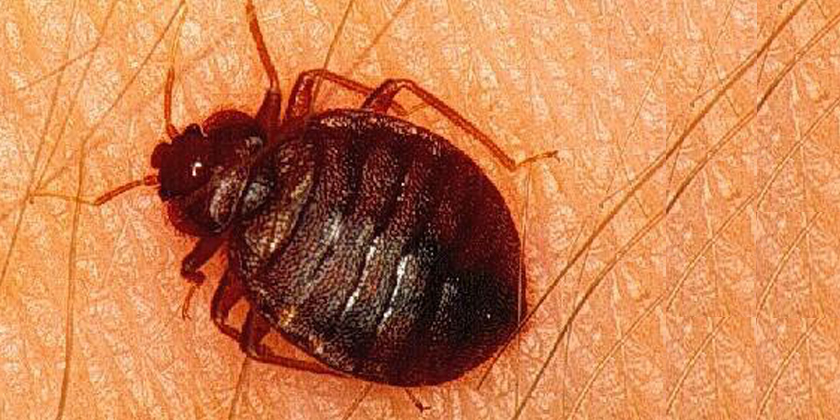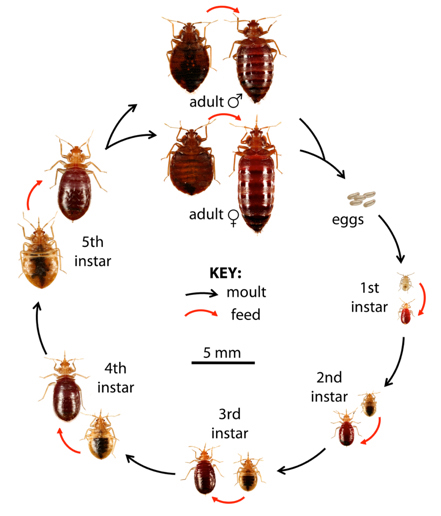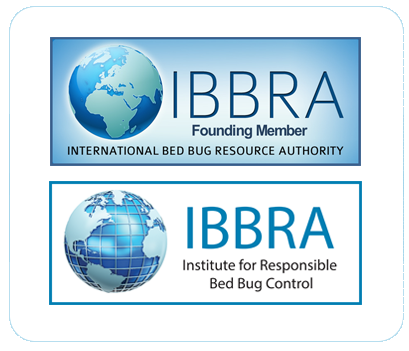Bed Bugs
Chicago is among the most bed bug infested cities in America. Bed bugs are notorious hitchhikers, making the Chicago area the perfect home for them. Whether you are traveling, commuting to work, or simply having dinner out, you are at risk of bringing bed bugs home. In apartments and other multi-unit housing situations, bed bugs can simply enter your unit through a wall shared with an infested unit. We offer safe and effective bed bug extermination services with proven results.
Our knowledgeable staff will answer any questions you may have related your bed bug problem. We will discuss our methods and products, as well as steps you can take to assist in the treatment program. We spend the necessary time with each and every client to make sure your expectations are met.
Bed Bug Identification and Bed Bug Life Cycle
Bed bugs typically go through 5 or 6 stages during their life cycle. Once hatched, a young bed bug, referred to as a first instar nymph, will take a blood meal then molt, becoming a second instar nymph. The process repeats itself until the bed bug becomes an adult. Although similar, bed bug appearance does differ between the various stages of development and should be considered when identifying them. Adult bed bugs can go 10 months or longer without a blood meal, whereas young nymphs must feed weekly.
Where Bed Bugs Hide
Bed bugs can live in almost any crevice or protected location. The most common place to find them on or near a bed or other area where people sleep. This is especially true during the early stages of an infestation. As the problem grows larger, bed bugs will move into other locations, making control more difficult.
Bed bugs most often hide in seams, folds, and crevices of mattresses, box springs, bed frames, and headboards. A thorough inspection requires dismantling the bed so that the upper and lower seams and surfaces can be examined. Things to look for are: the bugs themselves, shed skins of nymphs, and bed bug fecal matter (typically appears as rust-colored to black-colored spots). Box springs in particular afford many hiding spots for bed bugs. If an underlying dust cover is present, it may have to be removed to gain access for treatment and/or inspection. Headboards secured to walls should be removed and inspected. Wooden support slats, if present, should be removed and inspected. bed bugs will also frequently hide in items stored under beds.
Upholstered chairs, recliners, and sofas are typically the next most likely areas to find bed bugs and should be examined carefully along seams, skirts, and folds of fabric. Although sleeping areas are the most common place to find bed bugs, they can and will hide anywhere they can fit, such as: nightstands, dressers, under the edge of carpeting, cracks in wood molding, behind wall-mounted pictures or mirrors, behind outlets and switch plates, under loose wallpaper, and even in personal electronics to name a few.
Bed bugs can be notoriously difficult to treat and if you encounter them, you should engage the services of a licensed pest control professional who has experience dealing with these issues.
Call us today to learn more! 773-789-9789




